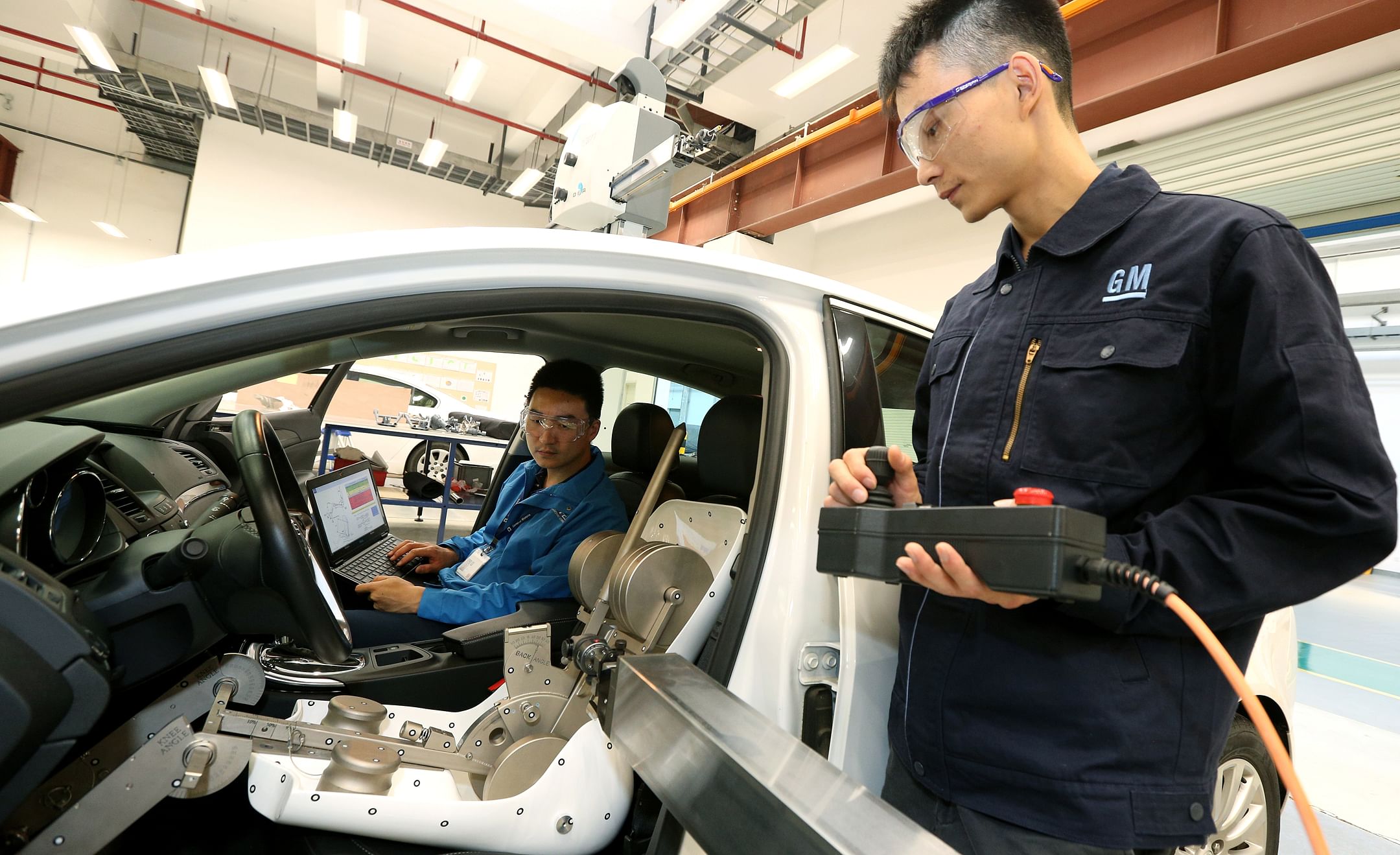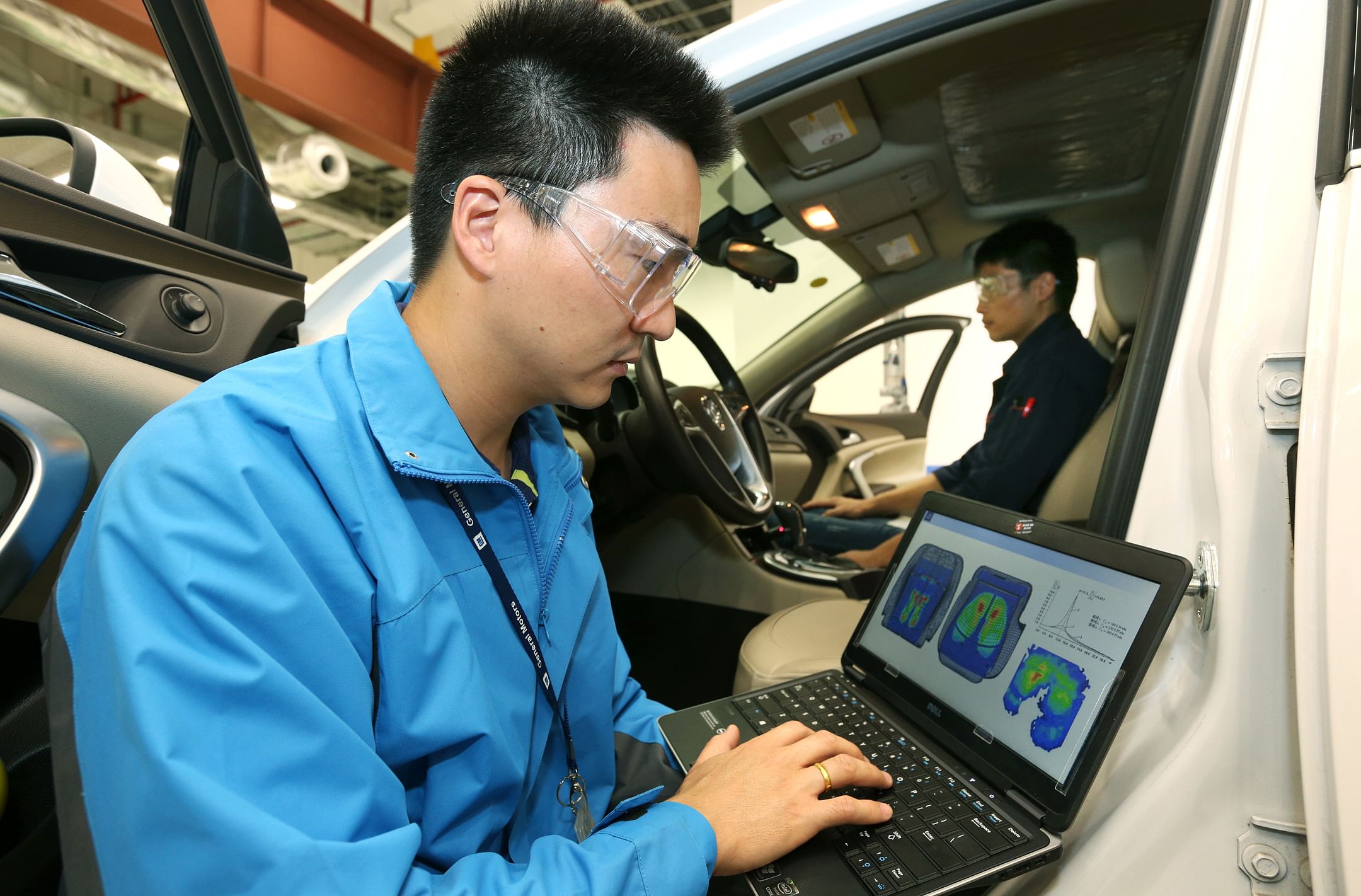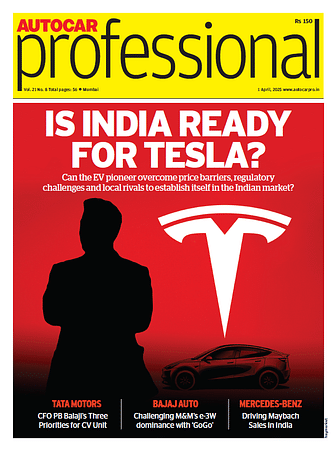GM uses simulation tools to deliver improved seat comfort
Depending on the vehicle program, GM seat engineers from around the world may work together using high-tech tools, real-world ride evaluations and customer feedback to fine-tune cushion contours and seat structures.
Workers in Beijing are known to endure the longest daily commute among drivers in China, at an average of 54 minutes and 18 kilometres, according to data collected by Didi this year. Their commute can be even longer if they drop off their children at school.
Reports have shown that long commutes can contribute to back pain, in part because sitting puts 40 percent more pressure on the spine than standing. Not surprisingly, many car buyers say interior comfort is a ‘top 10’ purchase consideration.
“When you’re driving in rush-hour traffic, few things are more important than a comfortable seat – this is what our customers have told us,” said GM China Interior Product Engineer Siller Sun. “We have listened to them and responded by providing seats that are not only comfortable, but durable as well.”
When it comes to keeping customers’ backsides comfortable, seat engineers at GM use a variety of scientific tests to ensure its car seats provide optimal comfort. Depending on the vehicle program, GM seat engineers from around the world may work together using high-tech tools, real-world ride evaluations and customer feedback to fine-tune cushion contours and seat structures.
Oscar to the rescue
Early in a seat’s development, engineers may use ‘Oscar’, a three-dimensional, mannequin-like simulation tool for determining the overall dimensional layout of a car’s interior to ensure optimal space and comfort for occupants.

Above: GM engineers work on a seating dummy H-point measurement.
GM seat engineers may also use digital pressure-mapping technology that measures a person’s back-side pressure distribution over the seat surface, creating a map with more than 4,600 data points. The information is transferred to a computer that generates graphics illustrating how occupants sit in the seat statically or while driving.
To complement seat-pressure mapping, engineers may also use a rear-end test robot that simulates the effects of seat force and deflection, and helps determine if a seat is too firm or too soft.
But GM seat engineers don’t rely exclusively on machines – they also conduct seat ride evaluations with volunteers, spending hundreds of hours logging thousands of kilometers to ensure they get sufficient feedback on seat prototypes.

Above: GM engineers conduct a seating pressure distribution comfort test.
You may like: Land Rover tests world first intelligent seat folding tech. . . remotely
RELATED ARTICLES
US tariffs will hurt both automakers and US manufacturing: ACEA
European Automobile Manufacturers’ Association says that the EU and the US must engage in dialogue to find an immediate ...
Trump levies 25% tariff on all cars imported to US
President Donald Trump claims new levy on all cars and car parts shipped into the country will create "tremendous growth...
Hyundai opens its third factory in the US: Metaplant America
Hyundai Motor Group Metaplant America's vehicle assembly and battery plant is the key pillar of the Hyundai Motor Group’...






 By Autocar Professional Bureau
By Autocar Professional Bureau
 07 Sep 2016
07 Sep 2016
 6230 Views
6230 Views









